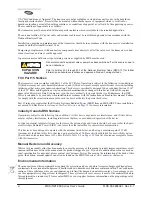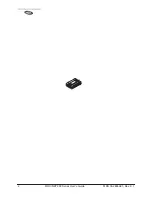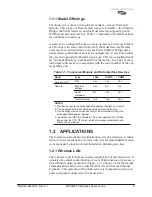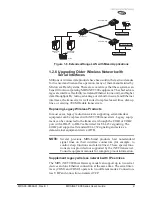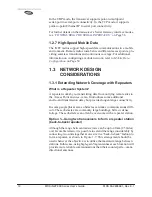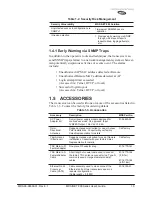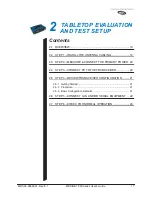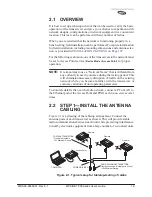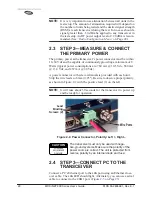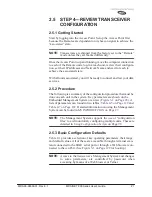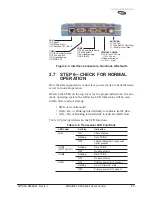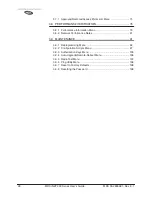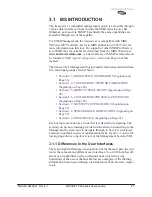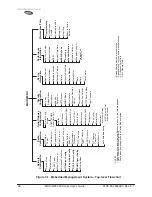
14
MDS iNET 900 Series User’s Guide
MDS 05-2806A01, Rev. E.1
antenna separation between the two AP antennas on the same support
structure. If that does not work, consult with your factory representative
about other techniques for controlling radio frequency interference
between the radios. (
See “A Word About Radio Interference” on
Page 136
for more details.)
1.4
MDS SECURITY SUITE
Today the operation and management of an enterprise is becoming
increasing dependent on electronic information flow. An accompanying
concern becomes the security of the communication infrastructure and
the security of the data itself.
The MDS iNET 900 transceiver is capable of dealing with many
common security issues.
Table 1-2
profiles security risks and how the
transceiver provides a solution for minimizing vulnerability.
Table 1-2. Security Risk Management
Security Vulnerability
MDS iNET 900 Solution
Unauthorized access to the backbone
network through a foreign remote radio
•
Approved Remotes List
Only those remotes included in the
AP list will associate
“Rogue” AP, where a foreign AP takes
control of some or all remote radios and
thus remote devices
•
Approved AP List
A remote will only associate to those
AP included in its local authorized
list of AP
Dictionary attacks, where a hacker runs a
program that sequentially tries to break a
password.
•
Failed-login lockdown
After 3 tries, the transceiver ignores
login requests for 5 minutes. Critical
event reports (traps) are generated
as well.
Denial of service, where Remote radios
could be reconfigured with bad
parameters bringing the network down.
•
Remote login
•
Local console login
•
Disabled HTTP & Telnet to allow
only local management services
Airsnort and other war-driving hackers in
parking lots, etc.
•
900 MHz FHSS for
i
NET (DTS for
i
NET II) does not talk over the air
with standard 802.11b cards
•
The transceiver cannot be put in a
promiscuous mode
•
Proprietary data framing
Eavesdropping, intercepting messages
•
128-bit encryption
Key cracking
•
Automatic Rotating Key algorithm
Replaying messages
•
128-bit encryption with rotating keys
Summary of Contents for iNET 900 Series
Page 10: ...2 MDS iNET 900 Series User s Guide MDS 05 2806A01 Rev E 1 ...
Page 26: ...18 MDS iNET 900 Series User s Guide MDS 05 2806A01 Rev E 1 ...
Page 118: ...110 MDS iNET 900 Series User s Guide MDS 05 2806A01 Rev E 1 ...
Page 120: ...112 MDS iNET 900 Series User s Guide MDS 05 2806A01 Rev E 1 ...
Page 136: ...128 MDS iNET 900 Series User s Guide MDS 05 2806A01 Rev E 1 ...
Page 148: ...140 MDS iNET 900 Series User s Guide MDS 05 2806A01 Rev E 1 ...
Page 150: ...142 MDS iNET 900 Series User s Guide MDS 05 2806A01 Rev E 1 ...
Page 164: ...156 MDS iNET 900 Series User s Guide MDS 05 2806A01 Rev E 1 ...
Page 172: ...164 MDS iNET 900 Series User s Guide MDS 05 2806A01 Rev E 1 ...

